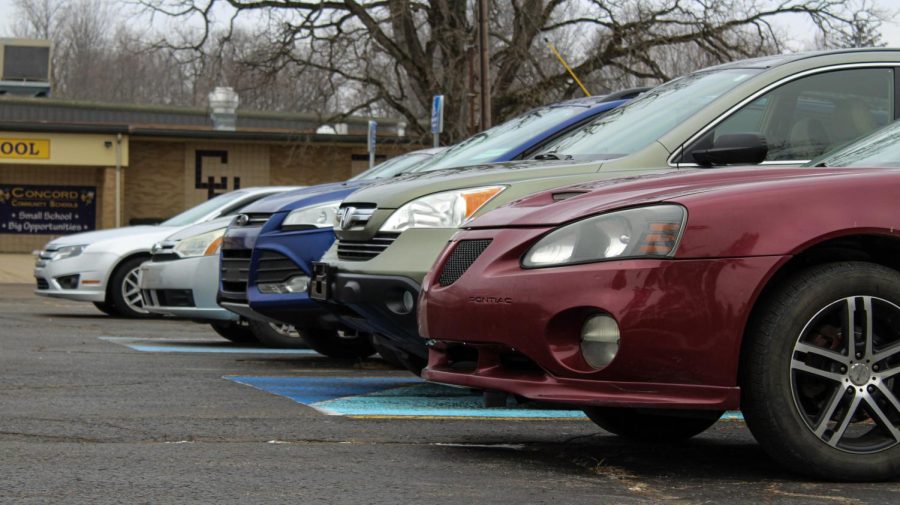Winter Driving Tips
January 21, 2022
Michigan has some pretty unpredictable weather. One day it’s sunny and 75 outside, the next it’s -10 degrees with 8 inches of snow. Due to these seemingly spontaneous weather conditions, it’s best to know how to adapt from dry and rainy conditions to snowy and icy conditions when driving to ensure safety. These tips will not only help you but can potentially save someone else too if you are able to avoid a collision with another driver when they are sliding out of control. These tips can also educate new drivers on what to really expect on the road and how to control your vehicle, rather than watching the driver’s training video that was filmed before most of us were even born.
Snowy / Icy Conditions: When temperatures drop below freezing (32°) is when conditions start to become worrisome. When the snow falls then melts, the melted snow will turn into ice, which is where driving is most difficult. Regardless of the thickness or the type of tread you have on your vehicle, they will have the tendency to slither and slide if not driving carefully.
Speeding: The worst thing you could do when driving in icy conditions is drive too fast. Driving fast on snow and ice could lead to your vehicle losing traction and cause it to lose control. Once the vehicle is out of control, it is extremely difficult to correct the vehicle, especially to stop it. The faster you go, the faster you’ll slide into the object that could be ahead of you, such as stopped vehicles, or even a tree. Think of a hockey puck being hit, it’ll slide much farther on ice than it would on asphalt, and that puck won’t stop until something stops it from continuing on. This also applies to steering the vehicle. If you turn too aggressively, the vehicle may oversteer, which is when the wheels turn but the vehicle continues straight. Gradually brake, and slowly steer around corners at a low speed. When avoiding obstacles, it’s best to brake with no steering input to avoid the vehicle losing control.
Braking and Safety Features: Fortunately, most modern cars built after the late ’90s were equipped with technology that assists you in driving. ABS, or Anti-lock Brake System, is a feature that ensures your vehicle’s brakes don’t lock under full braking in emergency situations. This is very useful as it allows you to have more control of your vehicle and allows you to steer out of the way if necessary. However, not every vehicle has this feature or may have a malfunction, so it’s best to know how to brake carefully in both the snow and ice. When coming to a stop at a red light or stop sign, it’s best to start braking long before the sign and only brake gradually, not aggressively. This is to ensure that your brakes do not lock up and cause you to slide out of control, or worse, into oncoming traffic. If your car is equipped with ABS and functions properly, if you begin to feel your brakes shutter or vibrate, that is completely normal, although it’s best to ease up if necessary. If your vehicle does not have ABS or doesn’t work, then gradually apply the brakes, and if the brakes begin to lock, ease up the brakes as well. Some vehicles may also be assisted by ESC, or Electronic Stability Control, which automatically corrects the vehicle when it begins to lose control by applying brake pressure to specific brakes to straighten the vehicle back out.
Traction Control / Acceleration: Another useful feature equipped on most modern cars is traction control. TCS, or Traction Control System, aids the driver by limiting wheel spin when accelerating harshly or in low-traction situations. Whether or not you have TCS, it’s best to accelerate lightly from a standstill and while driving to avoid wheelspin, which can lead to the vehicle losing control. More aggressive tread helps a lot when it comes to winter driving, but does not guarantee complete control over the vehicle.
Items to Carry When Traveling: According to the Michigan Secretary of State website, it is recommended to carry various items with you to help keep you warm such as a blanket and extra clothing. It is also best to bring a pair of jumper cables in case your vehicle’s battery dies. Always bring a snow brush/scraper to clear off any snow on your vehicle. Lastly, adding weight to the rear of the vehicle can help greatly in the snow, such as a sandbag, especially if your vehicle tends to fishtail in the snow.
Hopefully, these tips can help you and others drive more carefully in these treacherous conditions. Good luck, and stay safe out there!





